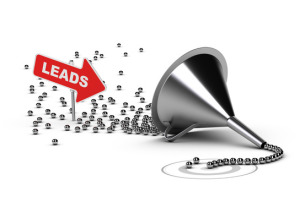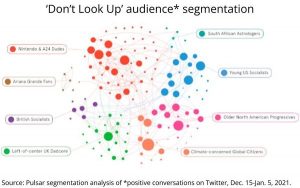Is ecommerce overtaking traditional brick-and-mortar retail? Yes. It is. What? You want more? Well alrighty then, let’s explore the differences, comparing ecommerce with retail to find out what the future holds. Is it game over for physical stores? Or can existing businesses find an edge to compete without losing the essence of their brand?
Ecommerce Statistics for 2021
The speed at which ecommerce is cutting into traditional retail’s market share is incredible. Q1 2010 saw just 4.2% of US retail sales happening online. In Q1 2019 that was 10.5%. The pandemic and subsequent lockdowns took that to 16.1% in Q2 2020.
It’s worth noting that the pandemic has accelerated consumer adoption of ecommerce, and this growth looks to be exponential. It’s expected that 95% of the global retail market will be happening online by 2040.
This is a generational change, meaning it’s unlikely to be reversed easily by changing social trends:
- 67% of Millennials prefer ecommerce to traditional retail
- 56% of Gen X prefer shopping online
- 41% of Boomers share that opinion
- Just 28% of senior citizens have made the switch
As Gen Z matures and begins to flex its spending muscles, that figure is likely to rise even higher. But of course, ecommerce isn’t a one-size-fits-all in practice. How does its adoption differ by sector?
Different Types of Ecommerce
Ecommerce is as varied as traditional retail; the way you approach it needs to adapt to the nuances of how your sector functions online:
- Business to business (B2B) businesses will have to adapt very little. In fact, not much B2B business happens nowadays without an online element
- Business to consumer (B2C) businesses need to think carefully about which platforms they’ll use, and how they’ll approach digital marketing for their inventory
- Consumer to consumer (C2C) ecommerce is a slightly misleading title, as you’ll need to pick the right third-party platform to host the sale
- Consumer to business (C2B) ecommerce flips the usual script by letting people, like designers and photographers, sell their services to businesses
- Business to administration (B2A) ecommerce lets businesses sell their services to the public sector more efficiently
- Consumer to administration (C2A) ecommerce facilitates the easier transfer of data directly from people to public sector services
Ecommerce vs Retail: The Experience
But let’s not get too hasty, the shopping experience contains many elements. Let’s break these down end-to-end and see how ecommerce compares against retail in terms of:
- How easily customers can inspect products
- The speed with which they get their products
- When people can shop with you
- The level of customer service each enables
- How long it takes to shop with you in total
- How easily customers can find your products in the first place
Interacting with Products
Ecommerce: When you’re selling online, customers can’t physically get a feel for your products to decide if they want to buy. This is less of a problem thanks to the rise of high-quality product photography, video, and 360-degree image viewing. But these all cost money.
Traditional: Customers can pick up your products, try them on, compare them side-by-side with similar products, and generally enjoy a more hands-on experience. However, this isn’t the case for everyone. Bulkier items tend not to offer this advantage to brick-and-mortar retail.
Getting Products
Ecommerce: It takes time for a product to arrive after it’s been bought. Of course, this span of time is getting shorter as technology advances and businesses perfect their processes.
Traditional: Shoppers make their purchase, walk away with their item, and can begin using it immediately. They do have to spend the time getting to and from your store, but this is likely to be much quicker than waiting for shipping.
Opening Hours
Ecommerce: Ecommerce runs 24/7. People can buy outside work hours when they’re more relaxed and in the mood to shop around. This could lead to more sales, engagement, and feedback.
Traditional: Most retail businesses keep traditional nine-to-five working hours. This is great for the personal touch, but seriously limits the window of opportunity to make sales.
Customer Service
Ecommerce: It’s easy for customers to get help online, especially if you invest in the right software to handle interactions with them. Chatbots working in partnership with human teams can answer questions fast, with libraries of key information at their fingertips.
Traditional: As mentioned above, the human touch is great. Knowledgeable staff can build a lasting connection with customers, but only during working hours. Newer staff can also take time to train, and much of the info they provide needs to be memorized.
Travel and Time
Ecommerce: There’s no contest here. It’s simply much faster and more efficient to shop online. Products of different types can be bought in one basket without having to carry everything between various shops.
Traditional: The best we can say about brick-and-mortar retail is that spending a day out shopping can be a fun, therapeutic experience. If you can spare the time, that is. For essential products, many people might value speed and convenience more.
Locating Products
Ecommerce: Some of the most powerful algorithms on Earth are devoted to helping your customers find the best products as fast as possible. Oh, and they also enjoy nearly unlimited choice in what to buy. In terms of finding items, ecommerce is untouchable.
Traditional: First, a product has to physically be in a store. Then the customer needs to either find it or ask a member of staff to show them where it is. And remember, it might be out of stock right now.
Ecommerce: Pros and Cons
So, we know there’s a stark difference between ecommerce and traditional brick-and-mortar retail. But how do each stand on their own merits?
Ecommerce businesses reap benefits like:
- 24/7 accessibility to a potentially global marketplace.
- Lower setup costs, with no need for customer-facing premises
- Access to digital services to help with every aspect of the business, from shipping apps to customer service software.
On the other hand, you’ll need to look out for:
- A highly competitive market, with multiple businesses competing for the same niche.
- Customers who expect their products within a strict timeframe.
- Lack of face-to-face communication, particularly when resolving disputes.
Brick and Mortar Retail: Pros and Cons
Meanwhile, traditional brick-and-mortar retail stores can still leverage advantages like:
- Customers being able to buy their stuff and use it right away.
- Being able to sell (and upsell) in person.
- Networking with other local businesses to cross-promote.
But the downsides of traditional retail can’t be ignored, including:
- High costs, both to set up and maintain the business.
- Being limited by your capacity to store inventory on-site.
- Customers having to actually leave their homes and come to your store.
Tips for Expanding into Ecommerce
Seen enough to convince you that ecommerce is right for your business? Even existing stores can expand to include an online element. Services like Fulfilment by Amazon can even store, ship, and handle customer service on your behalf.
First, you’ll need to win customers. You can do this by:
- Investing in an appealing, well-designed digital storefront, paying careful attention to user experience and consistent branding
- Taking time to optimize your product listings for search engines. Customers can’t buy from you if your products are buried beneath those of your competitors.
- Choosing the right platform. Services like Shopify are great but can be restrictive. Meanwhile, custom-building your own CMS is flexible but costly.
Omnichannel Selling: The Future of Ecommerce
If you’re thinking about entering ecommerce now, you could leapfrog the competition with an omnichannel approach. Every time your customer interacts with your business, they’re providing sources of data like:
- Site visits and behavior
- QR code scanning in physical locations
- Customer service queries and preferences
- Product reviews and feedback
- Social media interactions
Designing your business to be omnichannel means taking all these touchpoints on board. Together, they create a powerful body of data which you can use to refine and personalize the way your customer (or customers like them) will interact with your business next time.
A lot of businesses talk about being omnichannel, but few are walking the walk. If you invest in the right tools, software, and processes, you can steal a march on businesses the same size, or even larger than yours.
Multichannel vs Omnichannel: What’s the Difference?
Plenty of ecommerce businesses are multichannel simply because they use more than one outlet to sell. If your business sells via both Amazon and a retail store; congratulations, you’re multichannel. Omnichannel ecommerce is different. It’s a design approach which joins the different touchpoints along the user’s journey to create one consistent experience.
Final Thoughts
Retail isn’t going to die out completely any time soon. There’ll always be the need to dash out quickly for a bottle of milk and a loaf of bread. But across most sectors, in most product niches, ecommerce is rapidly gaining ground on traditional methods of selling.
It’s becoming more and more common for existing businesses to adopt a hybrid model. By beginning to sell online alongside your brick-and-mortar store, you open up an enormous new market without losing your brand’s identity. And with so many services out there to help you sell online, it can be a low-stress experience.
Digital & Social Articles on Business 2 Community
(80)





